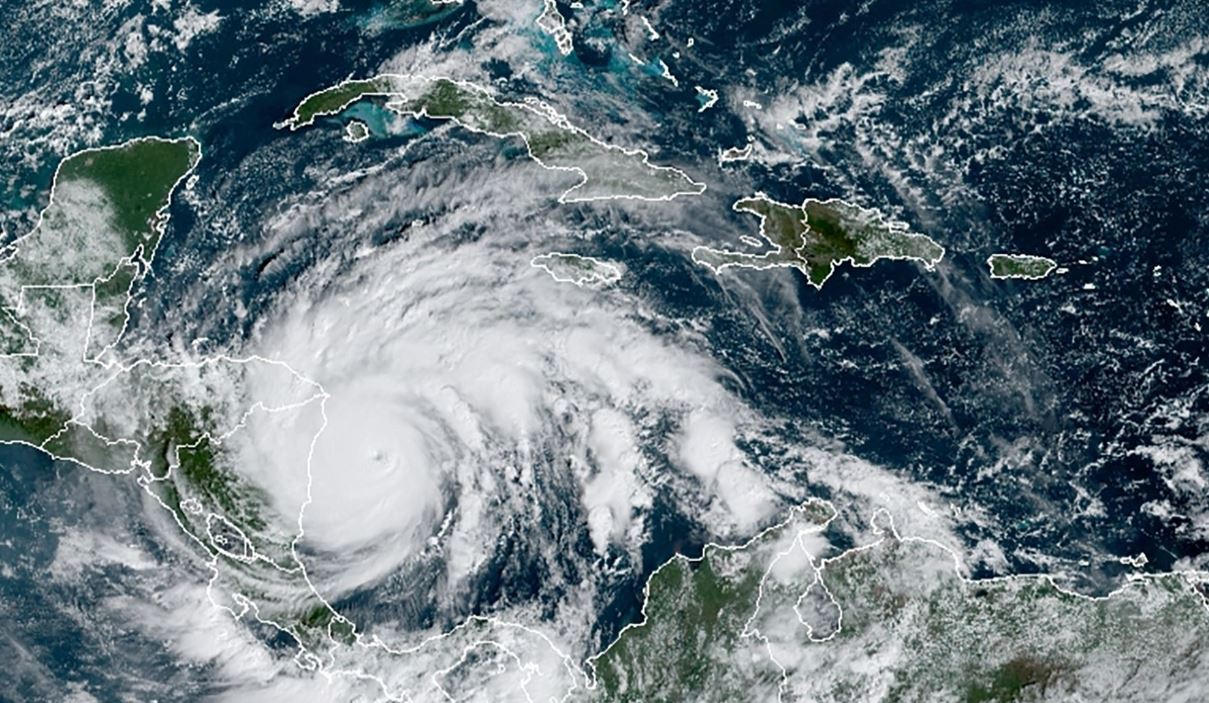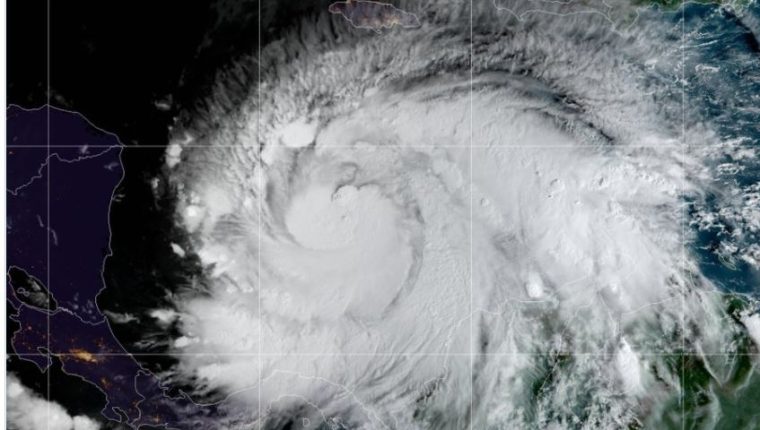Mientras se aproxima a Centroamérica, donde se prevé toque tierra esta noche, informó el Centro Nacional de Huracanes (NHC) de EE. UU.
En su boletín el NHC informó que el huracán presenta vientos máximos sostenidos de 260 kilómetros por hora (160 m/h) cuando se acerca a Nicaragua y Honduras, según EFE.
Se espera el huracán Iota traiga vientos catastróficos, marejadas ciclónicas potencialmente mortales e impactos de lluvia extrema a América Central.
Lea también: Así se preparan Honduras y Nicaragua ante la llegada del huracán Iota
Las autoridades meteorológicas de Nicaragua prevén que el nuevo huracán impacte entre el Cabo Gracias a Dios, en la frontera con Honduras, y Prinzapolka, más al sur, cerca de la ciudad de Bilwi.
El Instituto Nacional de Sismología, Vulcanología, Meteorología, e Hidrología de Guatemala (Insivumeh) informó este lunes 16 de noviembre que se continúa monitoreando el Huracán Iota el cual tiene vientos máximos sostenidos superiores 251 km/h.
BREAKING: #Iota has reached wind speeds of 160 mph, making it the second Category 5 hurricane on record to ever occur in November. pic.twitter.com/u3ifhvOzw6
— The Weather Channel (@weatherchannel) November 16, 2020
#Iota ya es categoría 5 con vientos de 260 km/h y rachas superiores a 300 km/h.
Esta tarde – noche tocará tierra en Nicaragua con efectos potencialmente devastadores.#FuerzaNicaragua #FuerzaHonduras pic.twitter.com/2xkWa5q0qN
— SkyAlert Storm (@SkyAlertStorm) November 16, 2020
Con Iota en categoría 5, el Ideam mantiene el aviso de huracán para Providencia y una vigilancia de huracán para San Andrés donde ya se reportan afectaciones https://t.co/80MBOHm5eh pic.twitter.com/ftmN2yQWBM
— Noticias RCN (@NoticiasRCN) November 16, 2020
#Hurricane #Iota has rapidly strengthened overnight and now has 155 mph (245 km/h) sustained winds. It could reach category 5 status later today before making landfall with 12-18 feet of storm surge. More on this exceptionally dangerous situation: https://t.co/tW4KeFW0gB pic.twitter.com/gNGzvJlPUe
— National Hurricane Center (@NHC_Atlantic) November 16, 2020
Además de los vientos sostenidos de 260 km/h de #Iota, se espera:
•marea de tormenta superior a 6 metros.
•lluvias acumuladas, hasta el martes, de 500 mm y puntuales hasta 750 mm en Nicaragua y Honduras principalmente.
•desbordamiento de ríos.
•deslizamiento de laderas. pic.twitter.com/uSlPZHSbhs— SkyAlert Storm (@SkyAlertStorm) November 16, 2020
Crisis in the making… hurricane #Iota has 155 mph winds heading straight for Central America (they were just hit w/ deadly Eta ). 2nd major hurricane in Nov had never happened in recorded history. Strongest, latest hurricane since Lenny in 1999. 20-30” of rain biggest impact: pic.twitter.com/PE0inCbg7T
— Ginger Zee (@Ginger_Zee) November 16, 2020
Even in the last hour or so you can see #Iota's eye contracting a bit on satellite imagery.
This is part of why winds have increased from the last night's recon flight.
The conservation of angular momentum means that the smaller a storm is, the faster it can spin all else equal pic.twitter.com/3RaTmuqrOq
— Jack Sillin 🇺🇦 (@JackSillin) November 16, 2020
Hurricane #Iota strengthens into first Category 5 of 2020 hurricane season: https://t.co/FLmj2fVmxA pic.twitter.com/kYt5EsFuI8
— The Weather Channel (@weatherchannel) November 16, 2020


